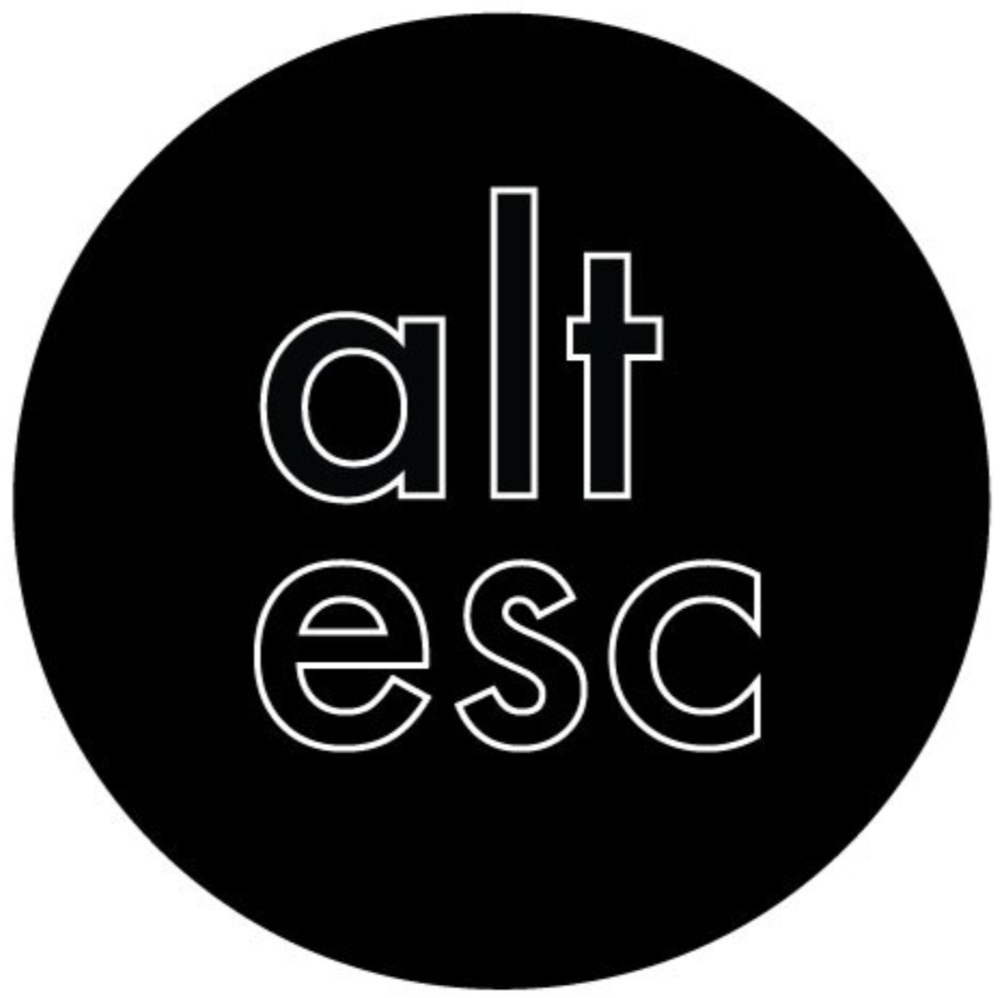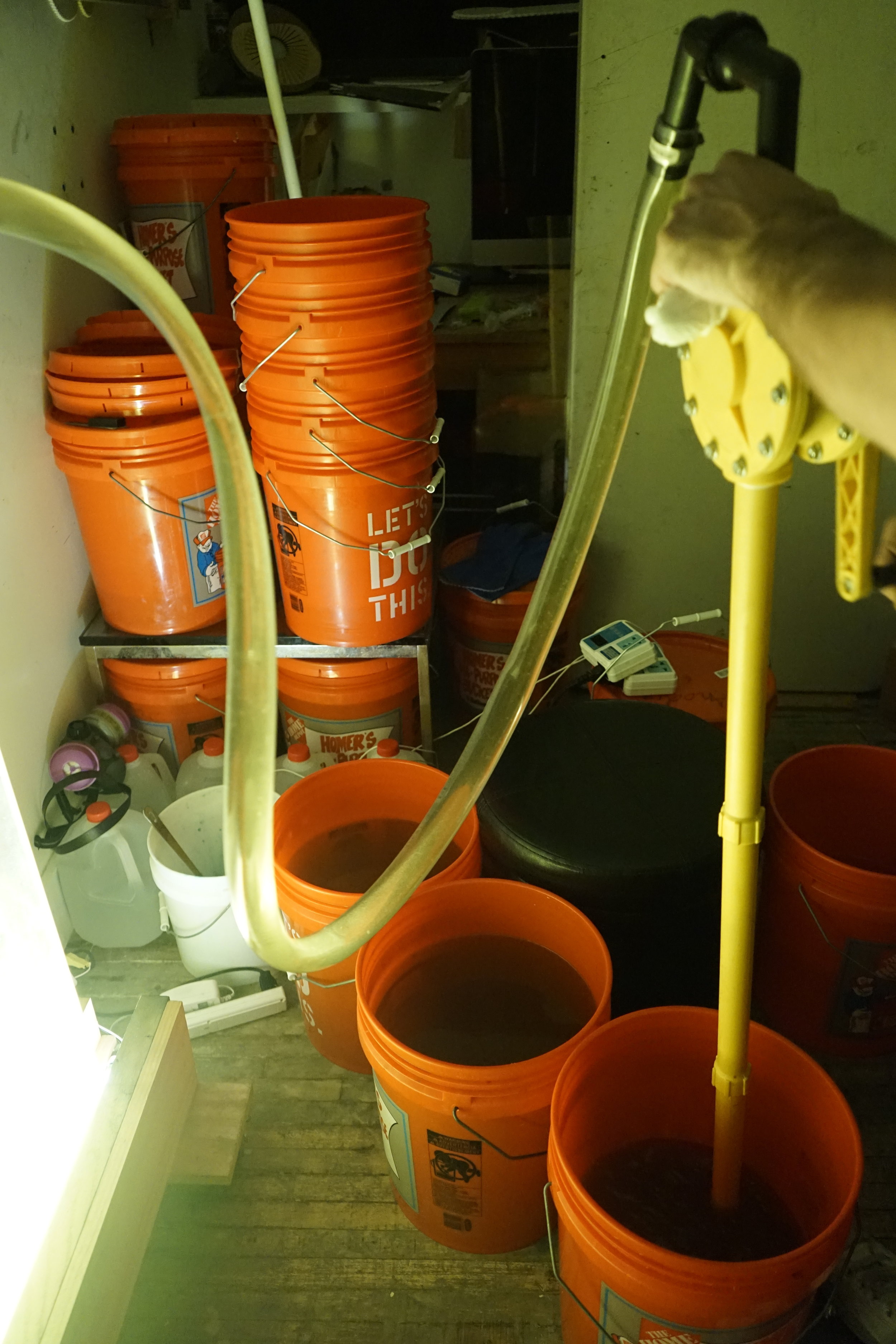luke todd
Luke Todd is a sculptor working in Brooklyn, New York. We were lucky to stumble across his pop up show Eli & Sons in an unoccupied U-Haul facility and garage last fall. He talks to us about that show, the metaphysics of gear theory, and his Frankenstein assistant LURCH. His work will be featured in our upcoming exhibition No Vacancy II at 929 Broadway, opening March 31.





What are you working on now?
Right now I am working on a new series of non-circular gear sets, particularly some larger designs that will be about 8 feet, which entails a lot of redesigning of the nuts-and-bolts stuff.
When did you start making these sculptures?
About two years ago, after I graduated college, I got really into gear theory. I did a lot of research on materialist literature, like Descartes, and I became interested in the idea of the gear– the most fundamental mechanism– as a representation of how the universe works. It describes a kind of delicate balance. One half of a gearset is designed by me and the other half is preordained by mathematics. I really like that harmony - the perfect one-to-one relationship.
How did you get into engineering?
Ever since I was a kid, I loved taking things apart and putting them back together.
And when you show them, they are always moving, right?
Yeah, I would describe them as studies of motion and interaction. I am constantly redesigning the motor system. It is the soul of the object. I am trying to hone in on the the ideal mechanism to make them function physically, as well as aesthetically.
Do you draw the designs out first?
When I design them, I usually begin with a circle– the most fundamental base of a gear– and deviate from there. I am trying to build a visual language that describes motion through studying the way that two objects interact mechanically. By now, I must have have designed 500-600 gear sets. The bulk of the work lies in the culling process, dialing into the sentiment that I am trying to convey. I never really know if they are right until i see them moving in front of me.
How do you make them completely accurate so they fit into each other?
I start with a roughly milled-out aluminum piece and then I file each tooth individually, so they fit together precisely. I have a CNC router here that I built, but it isn’t rigid enough to mill aluminium anymore. I still use it for smaller parts, but I get the bigger ones fabricated and finish them by hand. They are all colored through the process of anodizing. In essence, I submerge the part in sulfuric acid and apply electric current through it, which builds up a microscopic honeycomb-like structure on the surface that can be impregnated with dye. I use RIT dye from CVS. I love anodizing because the color becomes incorporated into the structure of metal, as opposed to being adhered to the surface.
I build little machines to help me make and color the gears. I'm a big fan for a right tool for the job. This is LURCH. I built him as assistant to aid me in the anodizing process.
Where did you get the name LURCH ?
I had a dream about him and he told me his name was LURCH.
What was the dream about?
I was working in a laboratory and felt like I had this robotic extension of myself all around me. When I woke up, I came up with the acronym: Lift Up Rotating Central Hub. He has a total personality. He's kind of a shit head.
Why? Does he glitch?
He stalls. Every now and then I have to give him a slap.
LURCH was one of the first things I built for the studio. He was originally designed to transfer the gears from one stage to next during the anodizing process.
How did you get into the alchemy components of all this?
I did a lot of research on the physical practice of alchemy. I read a bit of Jung, which introduced me to the more mental side. The alchemist’s goal is perfect manipulation of matter– this was seen as a sort of communion with the divine. Historically, the alchemist suffers as the essences are teased and tortured from the substance that he works with. The alchemist becomes a reagent in his own experimentation as opposed to a chemist who tries to remove himself from the process.
I had to do a lot of experimentation to understand the practical side of things. During the first year I started working on the gears, I was constantly experimenting and trying to control as many variables in the process as possible. I used to sleep in the studio, though, I think it would be too toxic now...
When I start with a piece of aluminum, it is shiny, so I etch the surface a bit to get it to a matte finish that scatters light a bit like velvet. I'm really into the theatrics of the ritual, so I use these underlit, clear tanks that put the whole process on show.
The aluminum attaches to LURCH?
Yes, he suspends and rotates the aluminum in the tanks.
What are these gradient diamond plate pieces?
I am fascinated by diamond plate. It is so ubiquitous in New York. Once you are acquainted with it, you’ll start to notice it everywhere. I love the idea of imparting a kind of aura into an otherwise functional, ordinary material. I have tried to find the original patent to learn about its history, but it doesn't exist. It kind of just came into being during the Industrial Revolution and it's been around ever since. I like its arcane origin.
What materialist theory inspired you? Before you mentioned Descartes?
Yes. The atomists, materialists, and stoics all believed the universe could be boiled down to mechanical principles - rational and deterministic interactions between matter. I think that is a beautiful way to look at the universe. It is an intimate connection with the materiality of all things. For me, being in dialogue with the proverbial machine places you in tune with the mechanical nature of the self as well as the inherent human yearning for perfection.
Color wise - do they come out exactly as planned?
The process only removes a small amount of material each time, so I can strip them and start again if the color doesn’t work out. Usually I do many color tests before I arrive at a final color/finish. With that being said, there are 1001 ways things can go wrong: power outages, faulty connections, small fires... you name it.
Can you tell me about the show at the U-Haul? What was it called?
The show was called Eli & Sons with Mark Flood. The name was inspired by family moving companies and partially by our friend Eli.
How does Eli feel about that?
He got a kick out of it.
We originally wanted to do a humble show in a U-Haul storage unit. We wanted to reach out to an older artist as a kind of mentor. Zach Sokol had a rapport with Mark Flood so he hit him up. He wrote, “I have these two friends who really enjoy your work. Would you be interested in doing a show with us in New York? No strings attached...” Mark was super receptive. We were humbled by how generous he was. He came out here and spent a lot of time with us while we installed. His only stipulation was that he had to have a place to sit down.
That's fair.
It was really nice of him. He's not much of an “formal” art guy. He doesn't even go to this own openings. But he came all the way out here to hang out with us. It was a series of serendipitous moments that led up to that show: finding the space, getting Mark on board… and it was my first experience running a gallery too. We had to be there for a month straight, taking care of everything. It was a lot of work, but very rewarding.
Where is he from?
Mark lives lives and works in Houston.
He had a piece in it, right?
He had a series of large inkjet paintings that were in the back of the gallery.
What was the full roster in of that show?
Mark Flood, Bobby Viteri, and myself. Zach Sokol hosted an interview project upstairs and Eli Libman released a cassette tape label.
How do you choose the shape of your designs?
A lot of my designs find their roots in biomorphic forms. Cells, protozoa, viruses– are all geometrically very intriguing to me.
When you were a kid did you ever press your eyeballs and see color? They are called phosphenes. I've always been really interested in that phenomenon. I also have dreams about the profiles for my gears. I see the them overlaid on my vision sometimes.
I find it interesting that you take an industrial functionally-driven object and recreate it with a more abstract function.
A lot of people seek a connection with the sublime through natural means… taking a hike, getting into nature. They try to connect with something larger than themselves. I find a similar connection in technology. It is something larger than me. That is the crux of the work. It’s a love letter to inner-workings of the universe.







